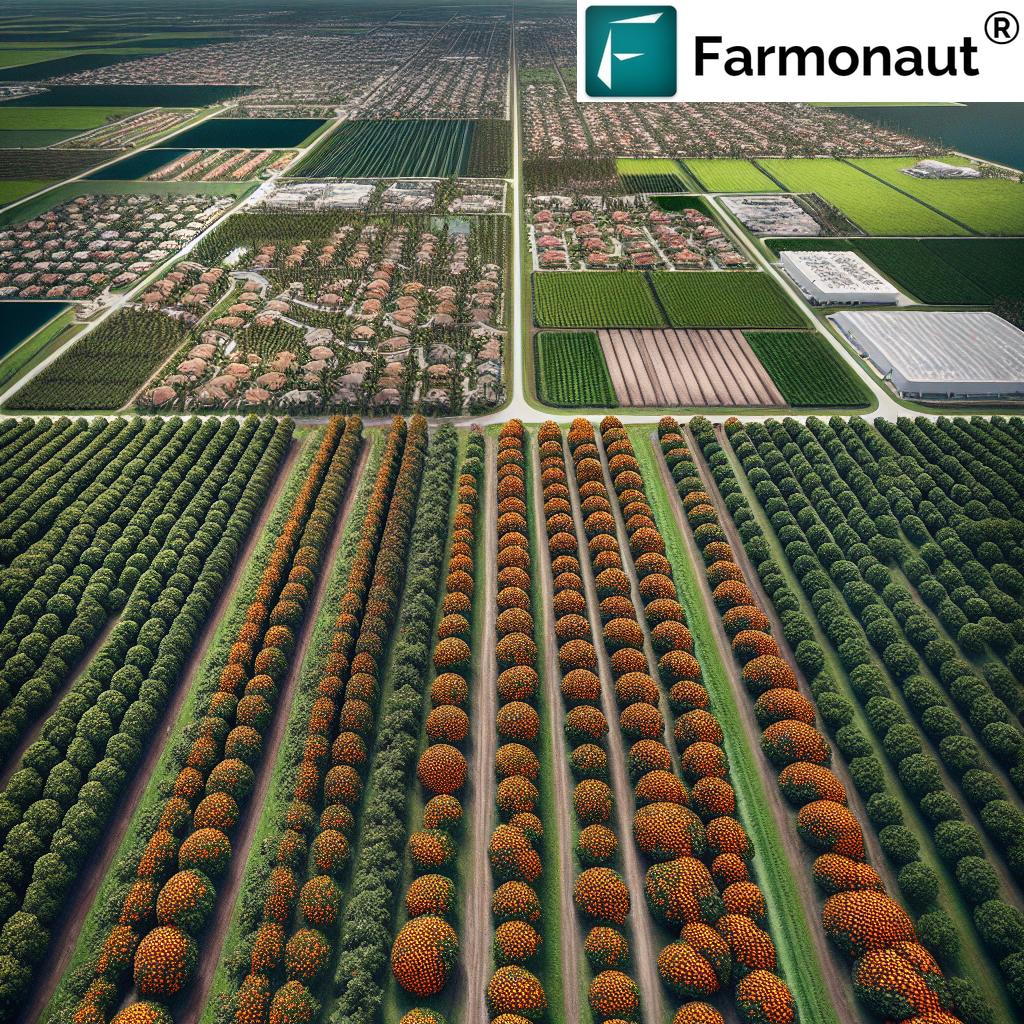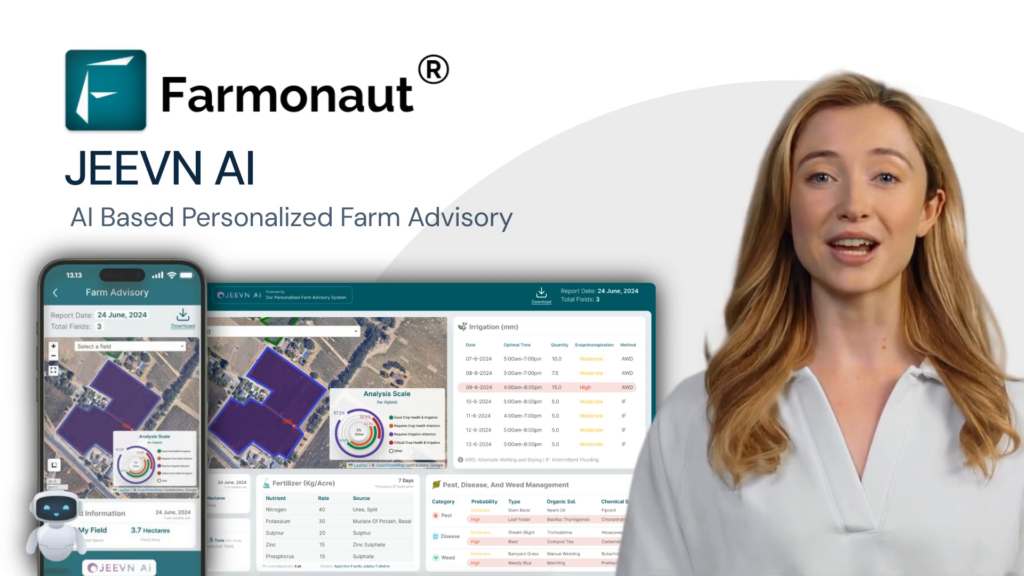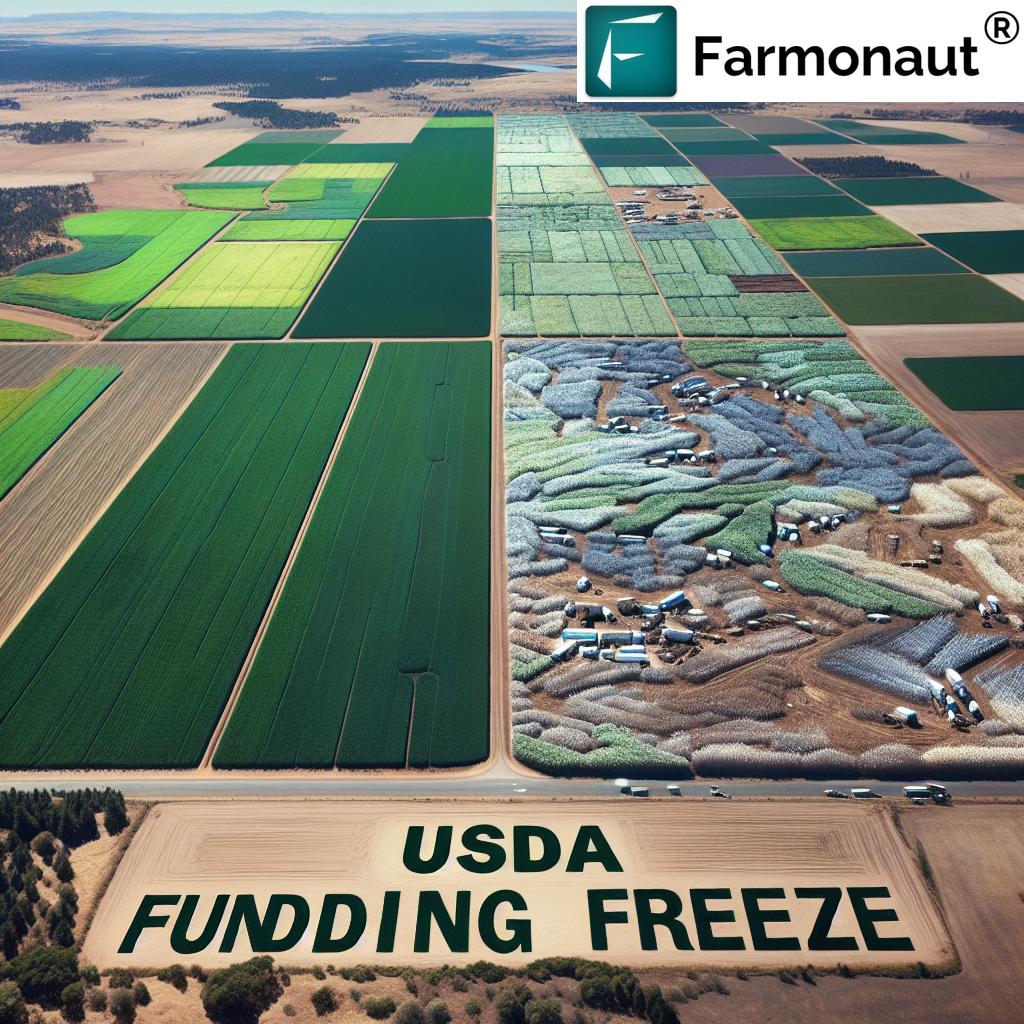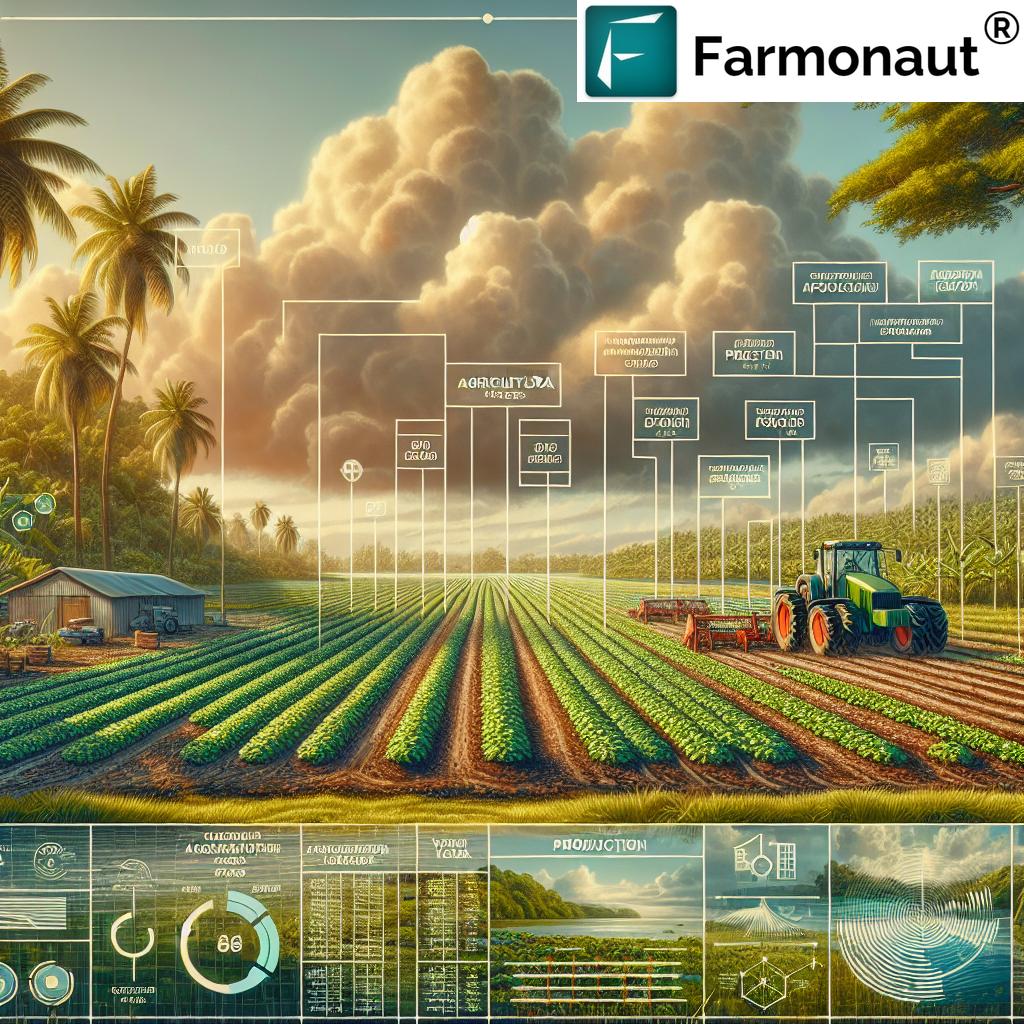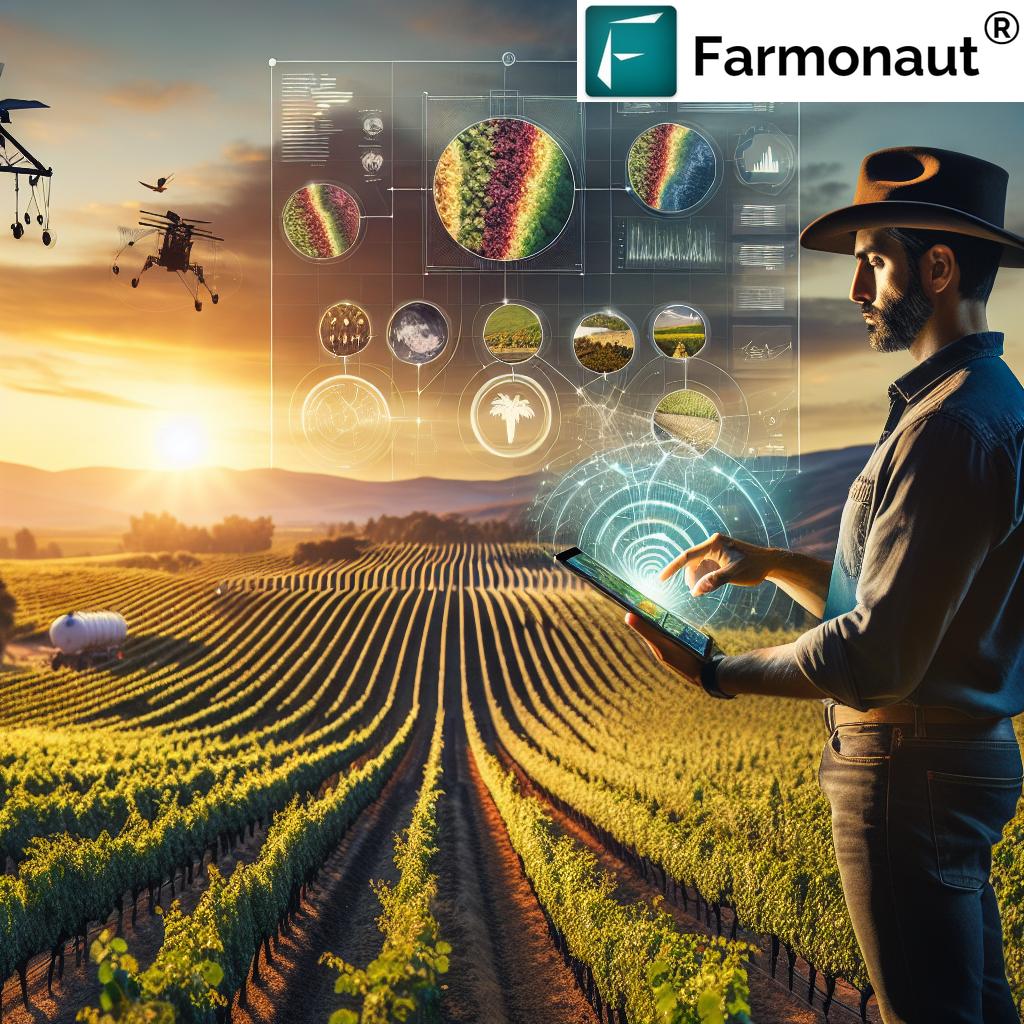US Farmland REITs List 2025: Essential Guide for Investors
“Over $3 billion is currently invested in US farmland REITs, reflecting growing interest in agricultural real estate assets.”
“US farmland REITs have delivered average annual returns of 8-12% over the past decade, outperforming many traditional assets.”
Table of Contents
- Introduction: The Rise of US Farmland REITs
- What Are US Farmland REITs?
- Why Invest in Farmland REITs in 2025?
- US Farmland REITs List 2025
- US Farmland REITs Comparison Table (2025 Estimates)
- Best Farmland REITs for 2025: Key Factors to Consider
- US Farmland REIT Market Trends & Outlook for 2025
- Risks and Challenges Facing Farmland REIT Investors
- Farmonaut: Satellite Solutions Advancing Precision Agriculture
- How to Invest in US Farmland REITs
- FAQ: US Farmland REITs 2025
- Conclusion: Should You Invest in Farmland REITs in 2025?
- References & Further Reading
Introduction: The Rise of US Farmland REITs
US farmland REITs occupy a unique niche within the broader real estate investment sector, blending agriculture and finance into a compelling investment opportunity. As we progress towards 2025, investors seek diversification, inflation hedging, and stable income streams that agricultural land can offer, without the operational complexity of direct farm ownership. Leveraging publicly traded REITs has simplified access to this resilient asset class, aligning perfectly with the growing global demand for sustainable food production and prime real assets.
This comprehensive guide will introduce the US farmland REITs list for 2025, detail top farming REITs, explore investment strategies, and decode market trends crucial for investors. Whether you’re an individual looking for a steady yield or an institutional investor seeking long-term land value appreciation, understanding the landscape of US farmland REITs is key to informed investment decisions.
What Are US Farmland REITs?
Real Estate Investment Trusts (REITs) are publicly traded companies that own, operate, or finance income-producing real estate assets. Farmland REITs, as a niche subset, focus on acquiring farmland (including row crop farms, orchards, and specialty agricultural properties) primarily in the US. These entities lease their land portfolio to experienced farming operators, generating consistent rental income while benefiting from the potential appreciation in land values over time.
Unlike direct farm investments, farmland REITs streamline the investment process by removing the complications of crop cycles, weather-dependent planning, equipment management, and labor. They are designed as highly accessible vehicles (traded on stock exchanges), enabling investors to gain exposure to the agricultural sector without having to manage or own land directly.
- Income Model: Predominantly based on leasing farmland to professional tenant operators.
- Diversification: Portfolios often span various US regions, crop types, and lease structures.
- Liquidity: Publicly traded REIT shares are easily bought and sold—offering greater liquidity compared to directly owning farmland.
- Investment Minimums: Typically much lower than the capital required for direct farm ownership or private REITs.
Why Invest in Farmland REITs in 2025?
As the agricultural sector evolves, the US farmland REITs list 2025 will offer investors several notable benefits:
- Rising Global Food Demand: With the world’s population expected to approach 10 billion by 2050, demand for agricultural products and food continues to surge, making productive farmland a critical resource.
- Strong Inflation Hedge: Farmland’s historical performance has often outpaced inflation. As commodity prices and rental incomes increase, farmland REITs provide a strong hedge for portfolios.
- Sustainable & Regenerative Agriculture: Many farming REITs are actively investing in sustainable and regenerative agriculture practices—resilient endeavors that meet rising climate and regulatory concerns.
- Portfolio Diversification: Farmland and agricultural real estate show low correlation with traditional stocks and bonds. This enhances overall portfolio resilience and reduces volatility.
- Steady Income: Farmland REITs typically offer predictable, inflation-linked rental income due to long-term leases with solid operators.
Interested in environmentally responsible investing? Learn how sustainable farmland management can benefit the planet through carbon footprinting solutions—track real-time agricultural emissions to advance your green investment goals.
US Farmland REITs List 2025: Leading Public and Private Vehicles
The US farmland REITs list for 2025 comprises publicly traded REITs, private funds, and hybrid platforms. Here are the sector’s leading companies and notable investment vehicles:
1. Farmland Partners Inc. (FPI)
- Overview: Among the largest publicly traded farmland REITs in the US; portfolio spans top crop-producing states.
- Highlights: Investments cover row crops (corn, soybeans, wheat), permanent crops (orchards, vineyards), rental yields, and sustainable farming operations.
2. Gladstone Land Corporation (LAND)
- Overview: Focuses on owning and leasing high-quality farmland, especially irrigated land suited for specialty fruits and vegetables.
- Highlights: Consistent dividend payments, emphasis on water-rich regions, specialty crops, and farm-related real estate.
3. American Farmland Company
- Overview: Once a public farmland REIT, now a mix of private and institutional land investment structures; significant agricultural holdings.
- Access: Generally available via private equity vehicles and institutional funds.
4. Brookfield Agriculture (Farmland Focus Segment)
- Overview: Not structured as a pure REIT, but a high-profile farmland aggregator with substantial assets under management.
- Highlights: Large-scale investment, focus on sustainable agricultural land, available mainly to institutional investors.
5. Private Farmland REITs and Trusts
- Examples: Several private REITs and agricultural land trusts operate nationwide. These vehicles may not be publicly traded but can be accessed via private placements or through certain financial advisors specializing in the industry.
- Trends: Focus on regenerative agriculture, traceability, and bulk farmland acquisitions in promising regions.
Enhance investment transparency: Explore the role of blockchain-based traceability in agricultural supply chains to add value and boost consumer trust in farm products.
US Farmland REITs Comparison Table (2025 Estimates)
| REIT Name | Ticker Symbol | Estimated Market Cap (2025, $ Million) | Portfolio Size (Acres) | Estimated Dividend Yield (%) | Asset Diversification | Geographic Coverage | 2025 Growth Estimate (%) | Investment Minimum ($) |
|---|---|---|---|---|---|---|---|---|
| Farmland Partners Inc. | FPI | $1,350 | 180,000+ | 3.4 – 3.9 | Yes | Midwest, Delta, Southeast, Western US | 8 – 12 | Share Price (≈$) |
| Gladstone Land Corporation | LAND | $870 | 115,000+ | 2.5 – 3.2 | Yes | California, Florida, Pacific NW, Mid-Atlantic | 6 – 10 | Share Price (≈$) |
| American Farmland Company (Private) | Private | $800 | 100,000+ | N/A | Yes | National (US) | 6 – 9 | $50,000 (typically) |
| Brookfield Agriculture (Farmland) | Private/Institutional | $2,200* | 350,000* | N/A | Yes | US, Canada, Brazil | 9 – 13* | $250,000+ |
| Representative Private Farmland Trust | Varies | $100 – $500 | 1,000 – 10,000 | 2.0 – 4.0 | Yes | Regional US | 4 – 8 | $25,000+ |
* Data for Brookfield segment estimated/aggregated across regions.
Are you a large-scale farm or agribusiness manager? Take control of your lands with satellite-driven farm management tools—from crop health monitoring to resource optimization, scalable for every operation.
Best Farmland REITs 2025: What to Look For and How to Compare
Choosing the best farmland REITs 2025 hinges on understanding key factors that drive growth and stability in the sector. Use these metrics as a checklist for potential investments—helping to move beyond simple yield numbers and into a holistic investment evaluation.
1. Portfolio and Geographic Diversification
- Diversified holdings across multiple US regions (e.g., Midwest, California, Southeast) help to reduce exposure to localized climate risks, disease, and weather events.
- Exposure to various crop types—including row crops (corn, soybeans), permanent crops (tree nuts, fruit; see also California), and specialty crops (vegetables, berries)—protects cash flow and supports year-round productivity.
2. Tenant Quality and Lease Structures
- Best-in-class farmland REITs vet tenant operators for operational experience, financial strength, and sustainable practices. Longer-term, inflation-adjusted leases reduce turnover and income volatility.
3. Commitment to Sustainability and Innovation
- REITs embracing sustainable farming and regenerative agriculture reduce soil degradation, maximize yields, and stand out with premium assets.
- Technology adoption—for instance, using platforms for satellite monitoring or traceability—enhances transparency and long-term asset value.
4. Financial Health & Growth Potential
- Low debt levels, robust acquisition strategies, and steady historical dividend yields signal strong management.
- Proactive expansion—especially into regions with increasing demand or water resilience—offers potential for above-market returns.
Did you know? Satellite-based monitoring can support crop insurance and loan approvals—reducing fraud, supporting sustainability claims, and enabling secure farm finance for all sizes of operations.
US Farmland REIT Market Trends & Outlook for 2025
The farmland REIT sector is shaped by several dynamic trends that influence valuations, yields, and risk management:
- Climate Change and Weather Volatility: Droughts, floods, and shifting seasonality are critical considerations. REITs focusing on diversified assets, drought-resistant regions, and superior water rights will fare better.
- Technology Integration: Precision agriculture platforms, like those offering fleet and resource management, enhance farmer productivity—boosting the asset yields on REIT land and attracting high-quality tenants.
- Policy & Regulatory Landscape: Farm subsidies, water use regulations, and climate policy changes in the US can materially affect profitability, cost structures, and lease terms in farming REITs.
- Global Trade and Market Prices: International demand for US crops and supply-chain protectionism impact rent values, operators’ financial health, and future land appreciation.
Modernize agricultural decision-making with AI-powered crop and plantation advisory—get tailored insights for your investments whether you operate a farm or invest in farmland REITs.
“US farmland REITs have delivered average annual returns of 8-12% over the past decade, outperforming many traditional assets.”
Risks and Challenges Facing Farmland REIT Investors
No investment is without risk. With US farmland REITs and farming assets, investors should keep these considerations in mind:
- Commodity Price Volatility: While lease structures offer some protection, revenue linked to crop prices introduces risk.
- Weather and Climate Risks: Severe weather—flooding, drought, unexpected freezes—can strain farm productivity and tenant stability.
- Liquidity Risk: Even with publicly traded REITs, some stocks see lower trading volume compared to urban or residential REITs—potentially impacting short-term liquidity.
- Policy Changes: Evolving US and global agricultural policy can affect subsidies, water use, and environmental financing.
- Operator Quality: The success of any farmland investment heavily depends on sound, responsible tenant operators.
- Farmonaut API – Access real-time farm, field, and weather data for investment portfolios.
- Developer Docs – Learn how to use Farmonaut’s REST API for land monitoring and agricultural data integration.
Farmonaut: Satellite Solutions Advancing Precision Agriculture
As investors consider the landscape of US farmland REITs, leveraging advanced technology for land monitoring and crop health analysis has never been more important. At Farmonaut, we enable investors, farm operators, and institutional stakeholders to monitor farm assets with real-time satellite imagery, AI-based advisory, resource management, and blockchain-enabled traceability.
-
Satellite-Based Crop Health Monitoring:
Our multispectral satellite imagery and AI analytics deliver actionable insights on vegetation vigor, soil moisture, and pest risks—optimizing yield and supporting sustainable farming. -
Jeevn AI Advisory System:
Personalized, AI-powered advice for operators helps maximize returns and maintain best-in-class asset stewardship. -
Blockchain Product Traceability:
For investors and corporations focused on supply chain transparency, Farmonaut’s blockchain solutions offer end-to-end assurance for agricultural commodities. -
Resource and Fleet Management:
Our platform empowers agribusinesses to optimize machinery use and enhance operational efficiency, reducing overhead across large farm portfolios. -
Carbon Footprinting and Sustainability:
Farmonaut’s carbon tracking tools support climate-aligned investment reporting and environmental benchmarking.
Whether you are managing a portfolio in the US or tracking land health and productivity globally, we provide scalable, affordable, and precise tools to keep your investments on the cutting edge.
Farmonaut Subscription Pricing
How to Invest in US Farmland REITs
For both individual and institutional investors, farmland REITs offer a streamlined way to gain exposure to the US agricultural sector without direct land management. Here’s a step-by-step investment guide:
- Research Key REITs: Begin by studying the farmland REITs list 2025, focusing on public entities like Farmland Partners (FPI) and Gladstone Land (LAND).
- Evaluate Investment Minimums: Publicly traded REITs typically only require the purchase of one share to begin, while private trusts or funds might have higher minimums (often $25,000+).
- Compare Portfolio, Diversification & Yield: Use our comparison table to assess REITs by geographic coverage, crop type exposure, dividend yield, and growth outlook.
- Open a Brokerage Account: US farmland REITs like FPI and LAND trade on major stock exchanges and are accessible via standard online brokerage platforms.
- Monitor Regularly: Track performance, market trends, and annual reports—especially developments related to climate, regulatory changes, and crop prices.
- Diversify: Avoid overconcentration. Blend farmland REITs with other real estate, equities, and bonds for smart portfolio diversification.
FAQ: US Farmland REITs 2025
What is a farmland REIT?
A: A farmland REIT is a company that owns and manages agricultural land, primarily leasing it to professional farmers. Investors in farmland REITs gain exposure to agricultural real estate, receive rental income, and benefit from potential land appreciation—without direct farm management responsibilities.
Are farmland REITs a good hedge against inflation?
A: Yes. Farmland assets have historically served as a strong inflation hedge, with rising commodity prices and cropland rents adjusting in response to inflationary pressures.
Which are the best farmland REITs for 2025?
A: The leading public farmland REITs are Farmland Partners (FPI) and Gladstone Land (LAND). Both offer diversified portfolios, strong regional coverage, and a proven track record of stable yield and growth.
Can I invest in private farmland REITs?
A: Yes, but access often requires higher capital minimums and is typically available through private placement to accredited investors or institutions.
What role does technology play in modern farmland management?
A: Technologies like satellite-based crop monitoring, AI advisory, and blockchain traceability improve land stewardship, increase yields, and enhance transparency. Platforms such as Farmonaut deliver affordable precision agriculture tools for investors, operators, and agribusinesses.
Conclusion: Should You Invest in Farmland REITs in 2025?
The US farmland REITs list 2025 presents a unique, resilient investment option for those seeking portfolio diversification, income, and long-term land appreciation. This sector is propelled by rising global food demands, climate-aware farming, and ongoing technological innovation. While Farmland Partners and Gladstone Land remain top candidates, the landscape is increasingly broad—spanning private trusts and hybrid vehicles focused on sustainable agriculture.
As you explore avenues to invest in farming REITs, always weigh factors like geographic diversification, tenant quality, financial health, and sustainability commitments. Leverage platforms—such as Farmonaut’s—offering AI-powered analytics, satellite monitoring, and resource management to future-proof your agricultural investments.
Farmland REITs aren’t just another asset class—they enable exposure to the critical food production system of the US and a global market with increasing demand. Whether you are a direct investor or an institutional stakeholder, use this comprehensive guide to make informed, confident decisions for 2025 and beyond.
References & Further Reading
- USDA Economic Research Service Reports
- Farmland Partners Inc. Corporate Filings
- Gladstone Land Corporation Investor Relations
- Nareit: Market analysis and sector performance
- NOAA and EPA climate impact assessments
- Farmonaut Carbon Footprinting
- Farmonaut Fleet Management
- 10 Low-Investment, High-Profit Agri Business Ideas in 2025 [Video]






